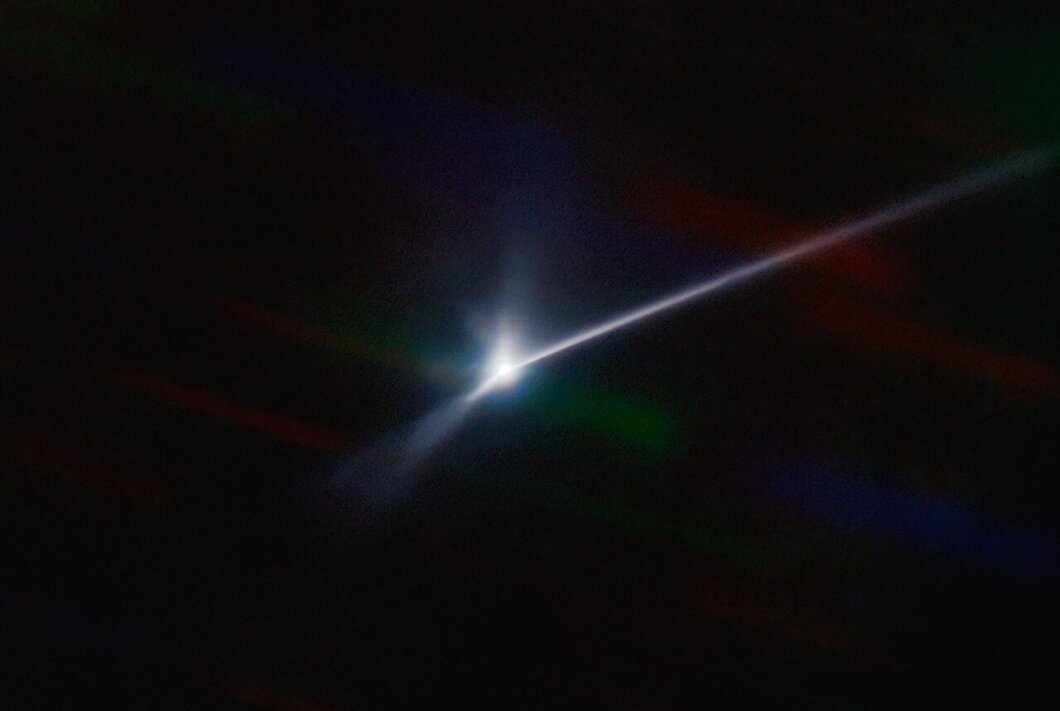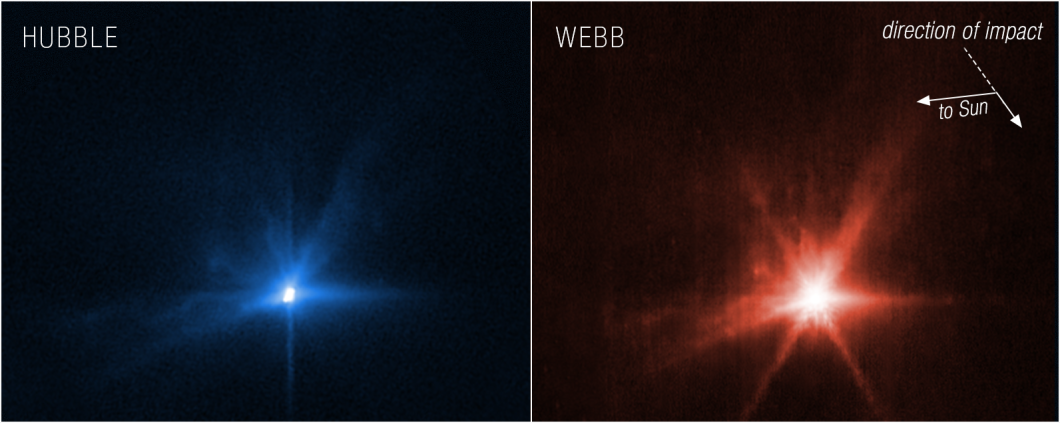
A new image shows the aftermath of NASA’s asteroid defense test last month against an Armageddon-style end-of-the-world scenario.
The image, which was captured by the Southern Astrophysical Research telescope located in Chile, showcased the long, roughly 6,200-mile stream of debris formed by the collision that took place late last month.
NASA’S HISTORIC DART MISSION SEES SPACECRAFT SMASH INTO ASTEROID
“It is amazing how clearly we were able to capture the structure and extent of the aftermath in the days following the impact,” Teddy Kareta, an astronomer at the Lowell Observatory said, according to NOIR Labs, which operates SOAR.
On Sept. 26, NASA slammed DART, the Double Asteroid Redirection Test, into the asteroid named Dimorphos, which is located some 7 million miles away. DART was first launched into space last year and embarked on a long journey to the asteroid.
Dimorphos posed no danger to Earth, but scientists wanted to hit it with DART in order to nudge it off its trajectory to see if a similar method could be deployed in the future against a dangerous asteroid.

The image from SOAR is one of the latest glimpses into the highly watched mission. NASA has previously released images from the James Webb and Hubble telescopes showing the impact.


DART collided with Dimorphos at an estimated 14,000 mph. Dimorphos orbits a larger asteroid named Didymos. The intent behind the DART collision was to push Dimorphos into a tighter orbit with Didymos to reconfigure its trajectory throughout space over time.
Footage from the ATLAS project, a NASA and University of Hawaii project, also showed the impact.
CLICK HERE TO READ MORE FROM THE WASHINGTON EXAMINER
The project cost an estimated $325 million to develop. If scientists determine the collision was successful, humanity may be able to breathe a sigh of relief that it may not meet the same fate as the dinosaurs down the line.
“Now begins the next phase of work for the DART team as they analyze their data and observations by our team and other observers around the world who shared in studying this exciting event,” astronomer Matthew Knight at the U.S. Naval Academy said, according to NOIR. “We plan to use SOAR to monitor the ejecta in the coming weeks and months.”





